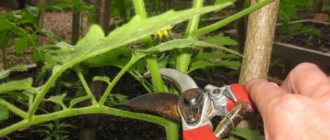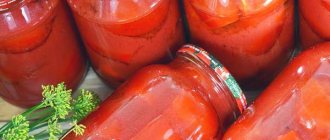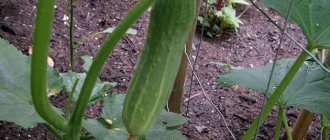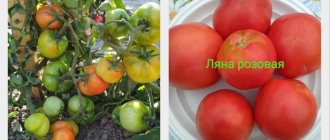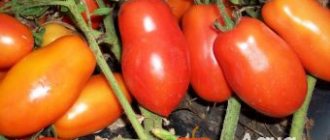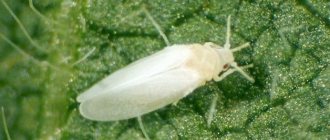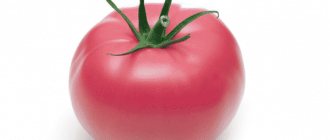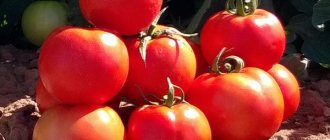Description
How to pick tomatoes? Tomatoes are tasty and juicy summer vegetables that every gardener diligently grows in their garden plot. Planting seedlings and growing a good harvest is only half the battle; you also need to harvest the tomatoes correctly. At first glance it may seem that this is very simple, but in fact it is important to know the collection times. In addition, harvesting in open ground and in a greenhouse is slightly different. Some nuances should be taken into account, which can be learned from the article.
Forming, pinching and gartering tomatoes
The purpose of pinching is, first of all, to remove excess shoots in order to avoid thickening of the tomato bush. This operation has to be carried out periodically, starting in mid-June, when flower clusters form. Peaning should be done in dry weather, preferably in the morning, after the dew has disappeared, so that the wounds dry out and heal in the sun. It is important not to confuse flower brushes and stepsons. The raceme branches off from the stem at an acute angle, revealing tiny buds. Stepchildren grow from the leaf axil and must be removed before the second flower cluster, and the sooner the better. Usually for this I use sharp scissors or pinch off the stumps, leaving stubs of 1.5–2 cm.
The formation of tomato bushes and pruning of leaves and/or shoots is carried out for several reasons. Firstly, excessive thickening of the bush prevents ventilation and, under certain conditions, can contribute to the occurrence of fungal diseases. Therefore, from the beginning of July, it makes sense to remove the lower leaves of tomatoes (up to the flower clusters), forming a “stem”. Secondly, when tomatoes fill and ripen, they need a lot of sunlight, therefore, you can trim off the shading leaves. Thirdly, formation is urgently necessary for indeterminate tomatoes, otherwise the bushes will turn into dense thickets, which will eventually die and become diseased. In the greenhouse, I form indeterminate tomatoes into one stem, which I tie to a trellis made of wooden slats.
In open ground, the least amount of trouble is with determinate, low-growing varieties: remove the stepsons a couple of times and tie them to a peg with a ribbon of synthetic material. It is much more difficult to cope with fast-growing indeterminate tomatoes, which produce inflorescences on the shoot after 2-3 leaves and grow up to two meters. I am strict with these tomatoes - I leave two stems, which I attach to a trellis in the shape of the letter V.
I must admit to you that I have not yet come up with the ideal design - a support for tomatoes. I tie tall tomatoes to a rigid plastic mesh attached to posts made of a metal profile. But for standard large-fruited varieties, such a trellis is not suitable; they need horizontal support, similar to a sports apparatus, bars, 30–40 cm high.
By the way, you should not throw away cut tomato leaves, because when they dry out, their smell repels insect pests; they can be used to mulch, for example, cabbage.
Tomato harvest time
In what month should you start harvesting fruits? You should think about the timing in advance, even when sowing seedlings. When choosing certain varieties of tomatoes, you should consider factors such as:
- climatic conditions;
- growing conditions (this can be open ground or a greenhouse);
- use of fertilizers.
Gardeners distinguish four degrees of ripeness of tomatoes.
| Tomato ripeness | Signs | Usage |
| Unripe (still gaining weight and size) | The vegetable is dense, and its peel is quite elastic and has a dark green color. | It is better to leave an unripe tomato to ripen on the bush. |
| Milk ripeness | The outside of the tomatoes is still green or white, but when you cut them, you can see the pink core. | Tomatoes can be collected and stored for ripening, which will last another two to three weeks. |
| Blazing ripeness | The tomatoes are starting to turn red. | Tomatoes at the stage of blanzhe ripeness can also be collected and harvested for ripening, but the timing will be different: 10 days - and the vegetable can be eaten. |
| Full maturity | Tomatoes acquire red, burgundy, pink, yellow colors (depending on the variety). Vegetables become soft. | Tomatoes are ready to eat and are also suitable for canning. |
As a rule, tomatoes begin to ripen 40-60 days after flowering. But the ripening process directly depends on weather conditions. If there are cloudy and rainy days, the dates will shift, since tomatoes need the sun for normal growth and development.
Many people like to harvest and use green tomatoes for canning. It is better not to eat unripe vegetables raw, as they contain substances dangerous to the human body that are destroyed by temperature. The ideal degree of ripeness of green tomatoes for canning is milky or bland.
Gardeners are primarily interested in how much harvest can be harvested. © https://ydoo.info/qa/kak-sobrat-pomidory.htmlBut here it all depends on the growing conditions and variety. If tomatoes are grown in a greenhouse, then on average 800-900 kilograms of vegetables can be harvested from one hundred square meters. In open ground the numbers are slightly different - 500 kilograms. If the numbers seem unrealistic to some, then, we hasten to reassure you, they are real, since on average you can collect from five to seven kilograms from one bush. And with hybrid varieties the harvest can be even greater.
Bringing tomatoes to maturity
Tomato ripening is effective both in sunlight and in dim lighting. Although most gardeners believe that vegetables ripen faster in the light.
Do not use airtight containers for ripening
Table 2. General recommendations
| Storage conditions | Characteristic |
| Layout | Fruits are sorted by size and stage of ripeness. Vegetables are laid out in dry, clean boxes in 2 layers no more than 20 cm high. For long-term ripening, they are placed in 1 layer. Every day the fruits are sorted and spoiled ones are thrown away. For better ripening, lay them out with the stalks facing up. If you put several ripe ones in each box of unripe fruits, they will ripen within 1 week. To speed up the process, tomatoes that are starting to ripen are removed from the boxes every day. They will release ethylene, which affects the ripening of other vegetables. To get the most juicy product possible, before frost, tomato bushes are pulled out by the roots and hung on a rope. The outflow of liquid and useful elements from the stem to the fruit makes the vegetables fresher. |
| Temperature | The optimal temperature regime is from 20 to 24 o C. At 30 o C, vegetables ripen faster, but lose their elasticity. To speed up the process, the temperature is lowered to 18°C, to slow it down - to 10°C. The colder the room, the more susceptible the fruits are to rotting. |
| Ventilation | The room is provided with access to clean air at the rate of 5 liters of oxygen per 1 kg of tomatoes and daily ventilation is arranged. |
| Lighting | When exposed to light, tomatoes acquire a brighter color. If it is necessary to speed up the process, the fruits are irradiated every day with a blue lamp for 30 minutes. |
| Humidity | Optimum humidity 80%. Exceeding this indicator leads to spoilage of the tomato. Low air humidity negatively affects the peel and taste. |
Fruits with a diameter of less than 4 cm ripen poorly and shrivel
Due to the fact that milk and blanc tomatoes ripen slowly, the period of their fresh consumption increases by 2 months.
The main factors influencing the speed of ripening are temperature and humidity in the room. By adjusting these indicators, you can slow down or speed up the ripening process.
Green-ripe tomatoes ripen within 1 month
Storing tomatoes
Unlike most vegetable crops, tomatoes have a short shelf life. This creates difficulties for gardeners when resolving issues related to their storage.
Small-fruited varieties with thick skins remain fresh for a long time.
If the temperature conditions are observed, good results can be achieved regardless of the variety:
Tomatoes at the milk stage of ripeness, harvested in late autumn, are stored for an especially long time.
The optimal container for storage is boxes
General recommendations:
- The room and trays are disinfected.
- Whole, unripe fruits are selected.
- Each vegetable is wrapped in soft paper.
- Boxes with tomatoes are sprinkled with moss, birch sawdust or peat chips.
- Tomatoes that are at the milk stage of ripeness are placed in boxes, the bottom of which is covered with heat-insulating material. Each layer is alternated with polyurethane foam balls, which retain heat well.
- When closing, check that the lid of the box does not damage the tomatoes.
- Tomatoes are stored in a cool, well-ventilated area away from sunlight.
- Vegetables are regularly sorted and ripened fruits are removed.
- Indoor air humidity is maintained within 85%.
To maximize shelf life, place tomatoes in the freezer.
If you follow these recommendations, tomatoes remain fresh for 8 weeks. Before eating, vegetables should be left in a warm room for several days.
Some gardeners store frozen tomatoes by placing them in boxes under the snow.
After prolonged storage, tomatoes become sensitive to the effects of pathogenic microorganisms. Harmful bacteria primarily infect the vegetable at the attachment point of the stalk. To prevent rotting, you should follow the rules for cutting fruits and storing the crop, as well as adhere to harvest dates.
Harvesting tomatoes in open ground
Tomatoes that grow in open ground are very dependent on weather conditions. In mid-summer there are rarely frosts, and tomatoes can grow quietly. But, if the temperature drops to +10 degrees, it is better to collect vegetables from the beds. But it’s not just a drop in temperature that you should be afraid of; for example, cold dew does not have a very good effect on young (if the tomatoes were planted in mid-summer) plants.
In central Russia, as well as in Siberia and the Urals, it is better to choose early and early ripening varieties of tomatoes for planting. In this case, it is better to germinate the seeds through seedlings first, and only mature plants can be transplanted into open ground.
After mass ripening, harvesting must be done every two to three days (and if there are too many vegetables, then every day). You should inspect the bushes daily for rotten and damaged tomatoes. If such fruits are found, they should be immediately removed along with the stem to prevent them from infecting other tomatoes.
The main principles of harvesting:
- First you need to decide on the purpose of collection: tomatoes are collected for consumption, for capping, or for ripening.
- You should start picking tomatoes only when they have reached the degree of maturity that is characteristic of a certain variety.
- If tomatoes are collected for ripening, then they must be picked only with the stalk, otherwise they may rot.
To collect tomatoes, you should choose a container. You can use boxes or buckets. It is better to focus on the amount of harvest. Each tomato should be picked carefully. If the vegetable does not come away from the stalk well, this may indicate that the tomato is not ripe. Do not stack tomatoes in several layers, as they may become wrinkled. If vegetables are collected for winter preparation, it is better to process them within two days.
Hardening and planting seedlings
After being kept “behind the glass” of a city apartment for a month and a half, the tomatoes need to get used to the cold May nights, wind and direct sun. I arrange the seedlings brought to the dacha into larger boxes, spill them with Epin + Zircon solution (1.5 ml per 10 liters) and place them on the uninsulated veranda. In the morning and evening I take it out to an open sunny place, and a day before planting I cut off a couple of lower leaves of young tomatoes.
The ideal seedlings are strong, stocky, 20–25 cm high with 7–9 large leaves. If the tomatoes are stretched out, no problem, just remove the leaves on the lower half of the stem and plant them at an acute angle, deepening them down to the leaves. If the plants break off from the base during transportation, it’s no problem, cut the stems, put them in water, and in a week the tomatoes will take root. At the end of April, I plant tomatoes in a greenhouse made of cellular polycarbonate and water them generously with warm water from a watering can.
In the garden, in an area prepared in the fall, I sprinkle granulated superphosphate at the rate of 2 tablespoons per square meter. m, then I dig it up and level it with a rake. Already at this stage it is clear that the labor costs for sowing and planting green manure are justified - the earth is like fluff! Tomatoes should be planted in open ground when the soil warms up to +12+15ºС, in dry and windless weather. In our area, this coincides with the flowering of lilacs.
From the beginning of the second ten days of May we usually don’t have night frosts, so I plant the seedlings in the garden quite early. But this year, an abnormal cold snap at the end of the first ten days of May, when at night the temperature dropped to -5-7ºС and many villagers lost their tomatoes even in greenhouses, forced me to change the usual course of work. I was afraid to plant tomatoes in open ground. Knowing that overexposed seedlings are significantly stunted in growth and that tomatoes tolerate transplantation well, I transferred the plants to larger pots. My tomatoes successfully withstood the cold, being buried in the greenhouse and additionally covered with film (on the arches) at night.
When planning plantings, it should be taken into account that tomatoes do not like thickening and should be given maximum light during the day. In open ground, I place plants from west to east in two lines, the distance between which is 60–70 cm. I plant determinate varieties in a checkerboard pattern of 60x60 cm, indeterminate varieties - 70x100 cm, the more spacious the better.
I pull the ropes to plant it evenly, make holes with a shovel, carefully remove the root ball from the container, dig it down to the lower leaves, cover it with soil and water it generously. An hour after watering, I add dry compost under each plant, stick a small peg at the stem for further garter, and install metal arches. I use Lutrasil/spunbond with a density of 60 g/m2. m, the optimal piece size for me is 2.1x10 m. When constructing a tunnel, it is important to stretch the covering material well and securely, leaving a small overlap on the ground.
The planted seedlings can be left without attention or watering for 5-7 days - let them take root. But, if the weather is cool, it is a good idea to spray young plants with the stimulant Etamon (1 ml per 1 liter of water), which improves survival rate and affects the formation of the root system.
On my rather large plot, I use unusual but convenient devices and tools. Multi-colored flags (beacons) decorate the garden and indicate those places that should be given more attention. In this case, beans are sown nearby, and the white flag reminds mom where to water in my absence.
Greenhouse tomatoes
Tomatoes grown in a greenhouse are better protected from bad weather conditions. If early varieties of tomatoes were planted, the first harvest can be harvested in mid-July. And if you plant late varieties, you can enjoy the vegetable even in September. Unlike open ground, in a greenhouse vegetables can not be afraid of temperature changes, cold dew and heavy rains.
It is necessary to collect tomatoes in a greenhouse in stages. Tomatoes ripen from bottom to top; harvest must be done in the same sequence. For collection use boxes, boxes, wide basins. It is better to stack vegetables in one, or maximum two, layers so that the fruits remain intact. If tomatoes are harvested for ripening, it is better to lay them out in one layer.
Tomatoes can be stored in a greenhouse until the first frost. And this is a great opportunity to enjoy a summer vegetable even at the end of autumn. But when the temperature drops below seven degrees, it is better to collect the tomatoes and put them in a warmer place, where it will be +18. At above-zero temperatures, vegetables will ripen within a few weeks. Tomatoes that are ripe should be eaten as quickly as possible.
In order for the tomatoes to ripen in the shortest possible time, you need to place one ripe tomato or red apple next to the green vegetables. This method has been used for many centuries.
Ripening tomatoes
Unripe tomatoes are collected just before frost, so they can be placed on the windowsill for ripening at home without any problems. Green tomatoes are poisonous due to the tomatine they contain (under the influence of temperature it loses all its harmful properties); they can ripen safely on the sunny side of the windowsill. They are sensitive to low temperatures, so they should not be stored in the refrigerator. To speed up the ripening of tomatoes, you can place an apple or banana next to them. It is worth remembering that tomatoes ripen quickly at 25 degrees Celsius, and at temperatures below 12 degrees Celsius the process stops.
How to get seeds?
If you have managed to harvest a large harvest of delicious tomatoes during the season, then it is definitely worth getting tomato seeds. When choosing a vegetable for seeds, you should pay attention to some criteria:
- It is better to choose varietal tomatoes. It is difficult to grow equally good crops from hybrids. In addition, hybrids degenerate very quickly. How to recognize hybrid seeds? Usually the packaging is marked F1, which indicates that the tomatoes are not varietal. To avoid confusion, it is better to make notes before sowing and planting in open ground.
- Tomatoes from which seeds are planned to be selected must be adapted to the climate where they will grow.
To collect good seeds, you need to choose the right fruits:
- tomatoes should grow on strong and healthy bushes;
- fruits for seeds are picked only from the lower part of the bush;
- The tomato must be fully ripened on the bush.
There are two options for obtaining seeds: the first is fermentation, the second is rapid selection.
Each method has its pros and cons, but to understand which method is better, you should understand each of them in detail.
Fermentation
The process of fermentation, or fermentation, allows the seeds to be freed from excess shells that prevent the seed from germinating. A pre-selected tomato must be cut into two parts or cut into slices, as shown in the photo. After this, use a spoon to collect the tomato pulp into the prepared container. It is important that the seeds float in the tomato liquid, so do not skimp on the tomato juice. Then cover the dish with a lid and leave for a day or two. The speed of fermentation depends on the temperature: the higher it is, the faster the process. It is very important not to miss the moment, otherwise the seeds may germinate and become unsuitable for cultivation. You can determine the readiness of the seeds by the bubbles that appear after some time. At the same time, the tomato juice will become lighter and the seeds will rise to the top.
It is better to carry out fermentation in a transparent container, such as a jar. This will make it much more convenient to observe the process.
After fermentation, planting material should be washed. The contents of the jars are sent to a sieve, through which all the liquid drains, but the seeds remain. After the fermented tomato juice has drained, the seeds should be thoroughly washed under running water. There should be no pulp left on the planting material.
Now you need to dry the seeds. First you need to wait until all the liquid has drained, and then the planting material should be transferred to a paper towel. You need to wait a little until everything dries. After this, the planting material is placed on a saucer or other container, the main thing is that the seeds lie in one layer. Complete drying takes place within a week, after which the planting material is placed in paper bags and sent to a cool place (veranda, refrigerator).
Do not dry seeds in the sun, as this may lead to untimely germination.
Fast way
The quick method is suitable for those who do not have time to ferment or dry. First, the tomato is cut, and then the pulp is taken out along with the seeds. Now you will need paper napkins. The seeds along with the pulp are spread on a towel and left for seven days. During this time, the juice and pulp will be absorbed into the paper napkin and dry, after which you can collect all the seeds with your hands and place them in prepared paper bags.
If several varieties are used for selection, it is better to sign the seed storage container in advance.
The quick method has one drawback - the quality of the seeds is worse, germination may also not be very good, since the seeds will have to break through several more shells in order to germinate. But fermentation is a long process that not everyone likes.
Features of growing different types of tomatoes
In the huge variety of varieties, there are separate groups, united by common characteristics that distinguish them from the general mass.
How to grow ampel tomatoes
Not every hobbyist has a plot of land, but anyone can grow tomatoes right at home. For this purpose, special varieties have been developed that are adapted to growing in a limited volume of land - pots, buckets, tubs, etc. Such tomatoes are called ampelous. Here is a list of the most popular varieties:
- Ampelous brindle;
- Cascade Red F1;
- City dweller F1;
- Garden Pearl;
- Mascot;
- Balcony miracle;
- Red Abundance, etc.
Ampel varieties have a number of advantages:
- shade tolerance;
- no tendency to stretch;
- are not afraid of drafts;
- have excellent taste.
The methods of planting and growing these tomatoes are the same as other varieties. In this case, it is necessary to take into account the peculiarities of agricultural technology of potted crops - timely and moderate watering is important (the use of drainage is mandatory), fertilizing every two weeks, replanting in larger containers if necessary. These procedures are well known to home plant lovers and there is nothing unusual about them.
Growing ampelous tomatoes at home is accessible to anyone who has encountered growing indoor plants
Video: how to grow tomatoes on a windowsill
How to grow non-vining tomatoes
Tomato varieties that do not require pinching (information about this is indicated on the seed packets) are usually low-growing and ripen in early and mid-term periods. All of them have a determinant type of growth, many have standard bushes that do not need garter. They are distinguished by the uniform ripening of fruits, their harvest is harvested in a short time. Ideal for growing in fields (but they can also be cultivated in a greenhouse). Such tomatoes are unpretentious, do not require excessive attention, and can be easily left unattended for 1–2 weeks (unless there is extreme heat) . Read more about such tomatoes in the next article.
How to grow double-stemmed tomatoes
When people talk about double-stemmed tomatoes, they usually mean tall varieties that form two stems. The method of such formation was described above. And the growing technology of such bushes does not differ from single-stemmed ones, the only difference is that when gartering, the stems need to be somewhat removed from each other so that thickening does not occur. For the same reason, when planting, it is worth slightly increasing the intervals between plants. Tomatoes with three stems are grown in the same way.
Video: forming a tomato into two stems
Storage periods and rules
After the crop has been harvested, it must be processed or stored. But where should you put the vegetables so they don’t spoil, and what should the temperature be? Tomatoes that have been harvested at full ripeness are best consumed immediately or processed within two days. During these several days, vegetables can be stored in the basement. After two or three days have passed, it is better to put the tomatoes in the refrigerator, otherwise they will begin to spoil. To keep tomatoes longer and not spoil, they should be wrapped in newspaper or plain paper, and each vegetable should be wrapped separately. After this, the tomatoes should be placed in a cool place.
If the tomatoes were collected for ripening, then they should be placed in a place where the temperature will be no less and no more than +20 degrees. In the case where vegetables were collected in cold weather, they should be warmed up a little before storing. To do this, the tomatoes are dipped in warm water for a couple of minutes, and then wiped dry and put away for ripening.
During long-term storage, tomatoes must be sprinkled with peat or sawdust. In this case, if one tomato rots, it will not infect others.
At first it may seem that picking tomatoes at home is very simple. But it is necessary to take into account many nuances. You should understand why the harvest is being done. You also need to learn to recognize the stages of maturity, because the timing of collection depends on this. Despite all the hassle, the process of picking tomatoes is very exciting.
Description of the plant
There is hardly a person who does not know what a tomato is, so we will briefly describe this plant. Tomato or tomato (both names in Russian have equal rights) is an annual or perennial herbaceous plant, a species of the Solanaceae genus of the Solanaceae family. It is cultivated as a vegetable crop. Due to the popularity of this crop, many varieties have been bred in the world, and in the State Register of Russia their number exceeds the number of varieties of any of the registered plants. Tomatoes are grouped according to various criteria:
- By type of growth: determinate, that is, those whose growth is limited by the formation of a flower raceme at the top;
- indeterminate - the growth of such bushes is not limited and, in the presence of favorable conditions, lasts up to 10–11 months (in heated greenhouses).
- early ripening;
- canteens;
- red;
Photo gallery: tomatoes of various colors
The fruits of red tomatoes are most often found in our country
The fruits of pink tomatoes are often used for salads
The fruits of yellow tomatoes look decorative
Green-fruited tomatoes are bred by exotic lovers
The fruits of black-fruited tomatoes look very original
Ripening tomatoes on the bushes
The bushes are dug up and cleared of soil. Choose a warm, ventilated room and hang them upside down, but not until they touch each other. With this method, small tomatoes even grow.
Some gardeners lay out the dug up bushes, without clearing the soil, in boxes and store them in a greenhouse or on the veranda. Continuing to water the roots weekly, the ripening crop is harvested.
In the third method, the bushes are cut and stacked in a stack, with the tops towards the middle, to a height of up to 80 cm. The cover is straw. In warm and dry weather, the stack is opened and the ripened tomatoes are removed, then covered again. This is done weekly.
Conclusion
A timely harvest will save the gardener's six-month labor and provide healthy vegetables. The main thing is to monitor the air temperature in the area and the appearance of cold fogs and dew.
How to store fresh unripe tomatoes
More often, tomatoes are traditionally laid out on windowsills, where it is warm and sunny. The main thing is warmth, 20-25 degrees, so the green harvest ripens in boxes, drawers or baskets, laid in 2-3 layers.
A popular way to speed up the reddening of fruits is to add a red counterpart or an apple to the container. Some people recommend adding a banana. Vegetables ripen in response to the release of ethylene by fruits. In order not to miss the moment of rotting of tomatoes, it is worth regularly, after 3-4 days, inspect the decomposed greens and remove ripe tomatoes with spots of spoilage.
Another way: take dry sawdust and pour layers of laid fruits or place paper between the layers. To allow vegetables to breathe, place a light cloth over the container or place a loose lid. With this method, 15 degrees of heat is enough. After 30 days, the tomatoes will ripen.
When is it necessary to pick tomatoes?
You shouldn’t delay harvesting tomatoes, because you can lose a significant part of the harvest. Tomatoes ripen in August, but this month cannot be called favorable. There are several negative factors:
- cold snap and sudden changes;
- rainy weather;
- heavy dew.
And if the temperature outside drops below +13 degrees, you should immediately start collecting them, even if the fruits are not yet ripe. If this is not done, the tomatoes will simply turn black or fungal diseases will begin to develop on them.
Conditions for ripening
After harvesting unripe tomatoes, it is necessary to create certain conditions for their subsequent ripening. First of all, you need to take care of a suitable room for this.
Note! Tomatoes are not always picked for ripening; sometimes they are left on the bushes in greenhouses. In this case, it is extremely important to monitor temperature conditions, lighting and other aspects of cultivation.
Ripening on the bushes
In this case, the fruits are not picked from the bushes, but the plants, along with their roots, are pulled out of the ground and hung on special structures. You can simply hang them upside down, so the tomatoes will turn red faster. The fact is that during this period the roots of the bush still contain nutrients, which, inverted, will continue to flow into the fruit. Vegetables will quickly gain the nutrients necessary for ripening and acquire a red tint.
Long ripening
This method is ideal for greenhouse fruits. The bushes are cut at the root and placed in a stack. It is necessary to arrange them so that the tops of the cut plants face the center. It is recommended to choose a low stack, no more than 70 cm. Then this structure is carefully insulated with not heavy, but dense straw mats.
The temperature in the tomato storage room should be within 15-17 °C. It is also necessary to monitor air humidity; its levels should not fall below 60-70%, ideally 80%.
For your information! After a week, you can check the fruits for ripeness, and then periodically collect reddened tomatoes so that they do not have time to deteriorate. All vegetables will ripen completely in 30–40 days
Ripening in the usual way
Traditional way
The most widely used method of storing tomatoes for ripening is the traditional method, when the fruits are picked and placed in a dark room with a moderate temperature: a closet, cellar, room under the bed or other similar places.
Stages of traditional tomato storage:
- If necessary, dry the fruits removed from the beds from the greenhouse so that rot does not form on them later.
- Prepare a wide cardboard or wooden box.
- Place the tomatoes in it and cover the top with a thick dark cloth.
- Leave the box in a dry room with a temperature of about 25 °C.
- After 4-5 days, the fruits should be turned over to the other side for uniform ripening.
- After 2 weeks, the reddened vegetables can be eaten.
To increase the shelf life of tomatoes before they ripen, you can use several traditional methods:
- pour sawdust into the box where vegetables are stored;
- Wrap each tomato in newspaper or paper napkin.
Methods of growing tomatoes
As with any popular crop, amateur gardeners have come up with more than one alternative way to grow tomatoes. Let's briefly list the main ones:
- on high (including warm) beds;
- under film cover;
- in a barrel;
- in bags;
- in buckets;
- upside down.
Photo gallery: popular methods of growing tomatoes
In cold regions, tomatoes are often grown in warm beds
It’s easy to install a film cover over a warm bed
An increased yield is harvested from a tomato bush grown in a barrel
Tomato roots receive more heat when grown in bags
Tomatoes grown in buckets can be moved around the site
An exotic method of growing tomatoes with their roots up is gaining popularity.
These methods are described in detail here.
Diseases and pests
The list of diseases and pests that can appear on tomatoes is quite wide. Here we will only list the most common representatives and give general recommendations for prevention. The main group of tomato diseases is fungal. Among them:
- late blight;
- blackleg;
- powdery mildew;
- crown rot;
- brown olive spot (cladosporiosis);
- brown rot;
- gray rot, etc.
To combat fungal diseases and prevent them, there is a whole group of special drugs called fungicides. They can be both chemical and biological. The latter are safer for humans; they are used at the stage of fruit ripening. To prevent diseases, the following conditions must be met:
- do not allow plantings to become dense;
- carry out pruning in a timely manner in order to improve ventilation and lighting;
- disinfect seeds before sowing;
- do not over-moisten the soil and do not create swamps;
- Regularly (with an interval of 2-3 weeks) treat plants with biological fungicides, for example, Fitosporin.
The number of possible pests of tomatoes is not so large, but they can cause no less harm, and sometimes much more. The most dangerous insects:
- garden cutworm;
- Colorado beetle;
- slug;
- aphids, etc.
To combat them, chemical and biological preparations of the insecticide group, as well as numerous folk remedies, are used.
Photo gallery: signs of some diseases and pests of tomatoes
Late blight is a dangerous disease of tomatoes
Blackleg often affects seedlings
When affected by brown rot, brown spots appear near the stalk
Gray mold often appears during rainy periods
Powdery mildew appears on tomato leaves in cool weather
Cladosporiosis affects tomato leaves
Tomato fruits are susceptible to blossom end rot if there is a lack of moisture.
Cutworm caterpillars gnaw round holes in tomato fruits
Colorado potato beetle larvae feed on nightshade leaves
Ants can carry aphids onto tomatoes
Slugs feed on juicy tomato fruits
Accelerated or traditional ripening of tomatoes
For such ripening you will need a warm, at least 20-25°C, well-ventilated room. Tomatoes can be laid out on racks, placed in baskets or in mesh vegetable boxes. In a layer of no more than 15-20 cm. Once every three to four days, the tomatoes are inspected, ripe ones are selected and diseased or damaged ones are removed.
To speed up the process of bringing tomatoes to a ripe state, you can:
- turn on bright lights;
- increase the room temperature to 29-30 degrees;
- put ripe apples or a couple of ripe bananas in boxes with green tomatoes. They produce ethylene, a gas that speeds up the ripening of tomatoes.
As a rule, under such conditions, the ripening of tomatoes will last two to three weeks.
